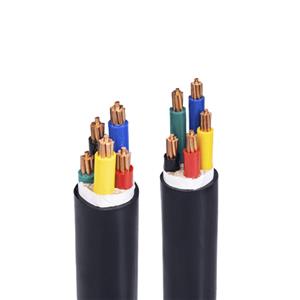What is the difference between photovoltaic cables and ordinary cables?
Photovoltaic cable is also known as photovoltaic special cable. It is used to connect photovoltaic modules, inverters and AC power grids. It is mainly used in photovoltaic power stations. It has the advantages of high temperature resistance, cold resistance, oil resistance, acid and alkali resistance, UV resistance, flame retardant and environmental protection, long service life, etc. It can operate stably under various harsh climatic conditions. Whether it is scorching sun exposure or strong winds and rainstorms, it will not affect its performance. Our commonly used models are PV1-F. Now let's take a deep look at the photovoltaic cable PV1-F from the source manufacturer of wires and cables. Photovoltaic cables are moisture-proof and sun-proof. The outer skin material is made of special flame-retardant and environmentally friendly materials. It is not easy to age and can resist moisture and ultraviolet erosion for a long time. It has good electrical conductivity, can effectively reduce power loss and improve system power generation efficiency. The special design of its outer skin material enables the cable to maintain stable performance in various harsh environments, providing reliable guarantee for the efficient operation of the photovoltaic system.

Photovoltaic cables are often exposed to sunlight, and solar energy systems are often used in harsh environmental conditions, such as high temperatures and ultraviolet radiation. In Europe, sunny days will cause the on-site temperature of solar energy systems to reach 100°C. Currently, various materials that can be used include PVC, rubber, TPE and high-quality cross-linking materials, but rubber cables rated at 90°C and PVC cables rated at 70°C are also often used outdoors, which will greatly affect the service life of the system. Photovoltaic cables use special materials and processes, such as cross-linked PE irradiated by an irradiation accelerator as cable-specific insulation and sheath materials, and the molecular structure changes, thereby providing excellent performance. Photovoltaic cables are mainly used in harsh climate conditions, and commonly used models are PV1-F and H1Z2Z2-K. Compared with ordinary cables, photovoltaic cables are consistent with ordinary cables in terms of conductors, but the insulation and sheath materials are different. Ordinary cables are only suitable for laying in ordinary environments, while photovoltaic cables can be used for laying in harsh environments. The insulation of photovoltaic cables is made of irradiated cross-linked polyolefin insulation, and the sheath is also irradiated cross-linked polyolefin insulation; the insulation of ordinary cables is polyvinyl chloride or cross-linked polyethylene insulation, and the sheath is polyvinyl chloride sheath.

In the future, photovoltaic cables will develop in the direction of high performance, high reliability and low cost. Foshan Yuejiaxin Wire and Cable Co., Ltd. has increased its efforts in technological innovation and product research and development, and continuously introduced new technologies, new processes and new materials to improve product performance and quality to meet market demand, improve product quality and production efficiency, reduce production costs and enhance market competitiveness.
- PVC-Insulated Cable
- 450/750V BV Single- Core Cu/PVC Cable
- 450/750V BVR Single- Core Cu/PVC Cable
- 300/500V Or 450/750V RV Single-Core Cu/PVC Flexible Cable
- 300/500V Or 450/750V RVV Multi-Core Cu/PVC/PVC Flexible Black Cable
- 300/500V Or 450/750V RVV Multi-Core Cu/PVC/PVC Flexible White Cable
- 300/500V Or 450/750V RVVP Multi-Core Cu/PVC/CWS/PVC Screened Flexible Cable
- 450/750V KVV Multi-Core Cu/PVC/PVC Control Cable
- 450/750V KVV22 Multi-Core Cu/PVC/STA/PVC Armoured Control Cable
- 450/750V KVVP Multi-Core Cu/PVC/CWS/PVC Screened Control Cable
- 450/750V KVVP2-22 Multi-Core Cu/PVC/CTS/STA/PVC Screened Armoured Control Cable
- 0.6/1KV PVC-Insulated PVC-sheathed Single-Core Power Cable
- 0.6/1KV PVC-Insulated PVC-sheathed Multi-Core Power Cable




